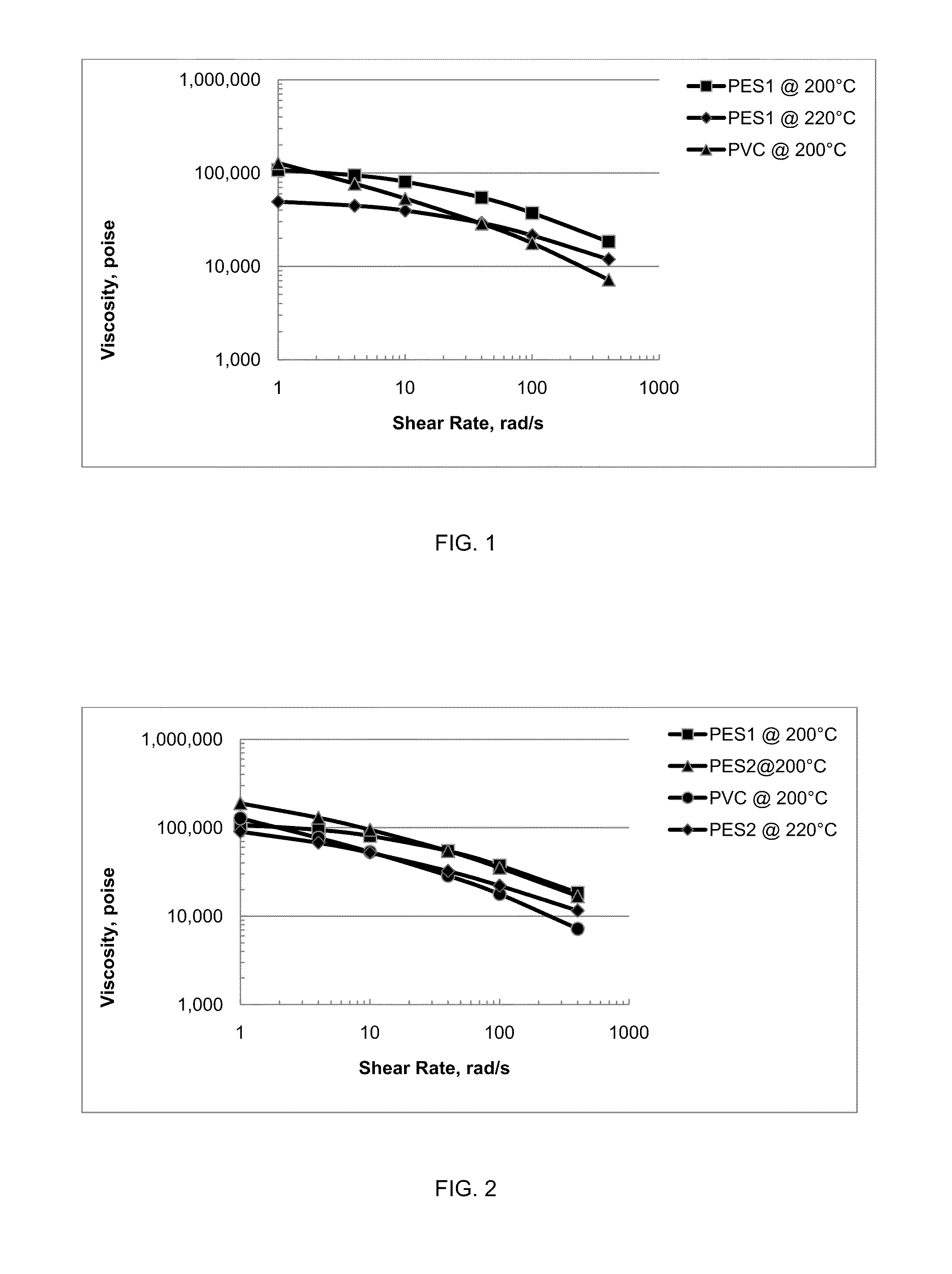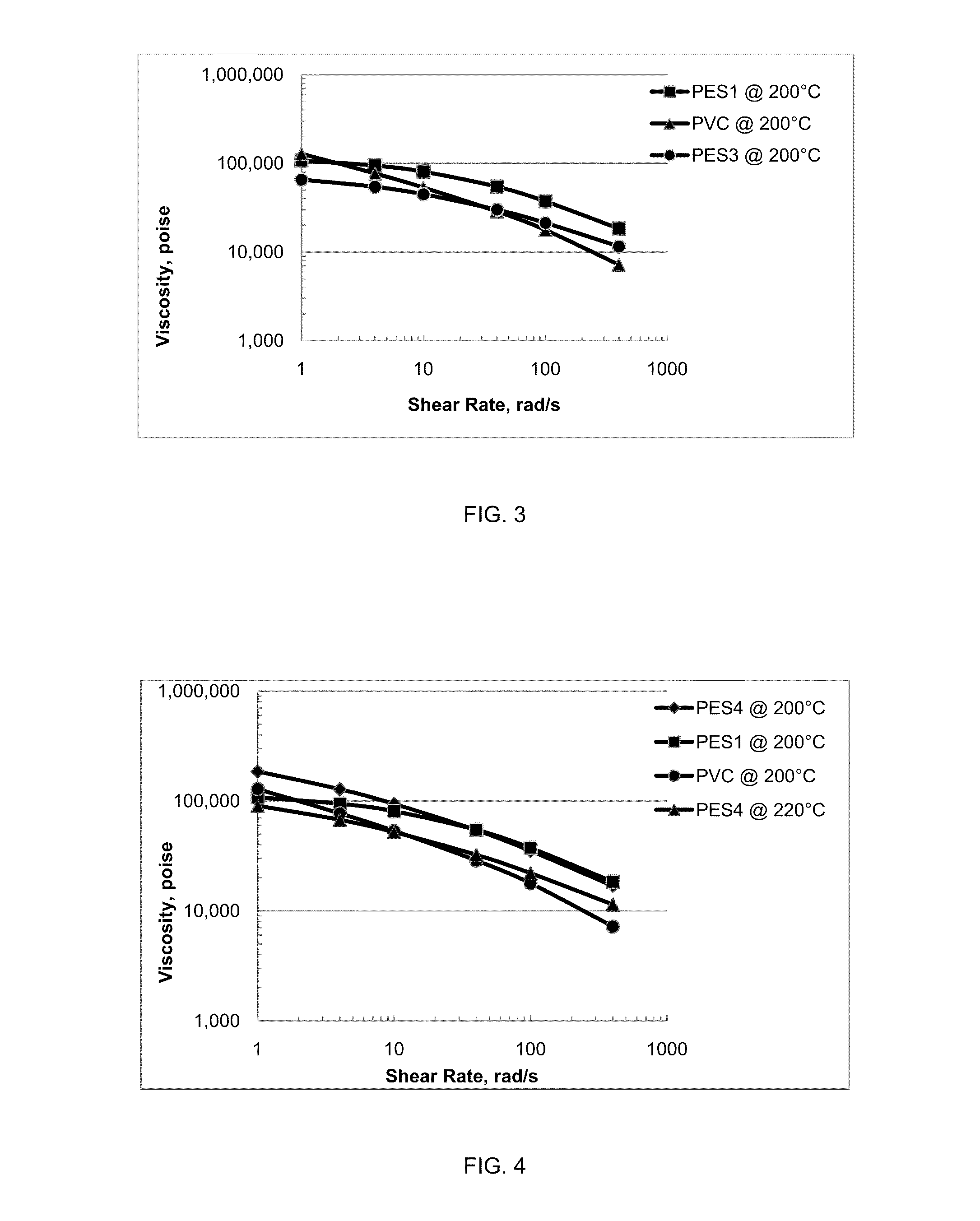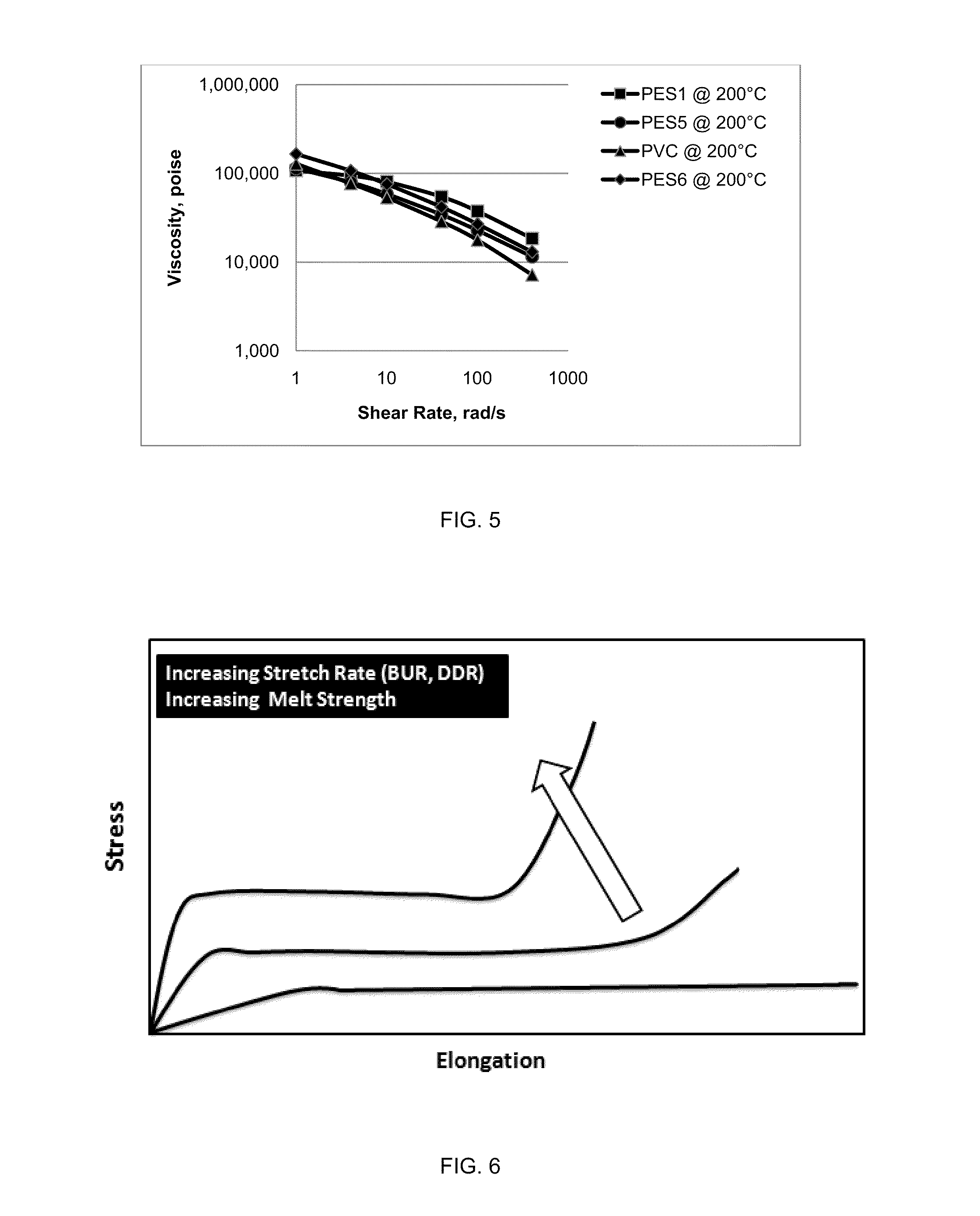Melt strength enhanced copolyester with improved stability and profile in blown film
- Summary
- Abstract
- Description
- Claims
- Application Information
AI Technical Summary
Problems solved by technology
Method used
Image
Examples
example 2
[0078]To overcome the dilemma of PES 1 in Example 1, 0.18 wt % of TMA was added to the same polyester composition as PES 1 to form PES 2. The IV of PES 2 was maintained the same as PES 1.
[0079]The melt viscosity of PES 2 at 200° C. and 220° C. and various shear rates was measured and compared with the melt viscosity of PES 1 and PVC at 200° C. This comparison is shown graphically in FIG. 2.
[0080]As seen in FIG. 2, PES 2 still has a much higher viscosity if it is extruded at 200° C., even though it has a much better zero-shear viscosity.
[0081]By increasing the processing temperature to 220° C., the melt viscosity of PES 2 is now similar to PVC's at 100 s−1 shear rate while the zero-shear viscosity remains high and close to PVC's as well.
[0082]PES 2, therefore, can be used as a PVC replacement in blown film applications with a simple adjustment of increasing the extrusion temperature in the extruder barrels.
example 3
[0083]For a straight drop-in replacement of PVC without any machine adjustment, the same polyester composition with 0.2 wt % of TMA and a lower IV is recommended.
[0084]The melt viscosity of PES 3 at 200° C. and various shear rates was measured and compared with the melt viscosity of PES 1 and PVC at 200° C. This comparison is shown graphically in FIG. 3.
[0085]As seen in FIG. 3, PES 3 has similar viscosity as PVC at 100 s−1 shear rate at 200° C. The zero-shear viscosity was not as high, but was much better than that of PES 1 at 220° C. as shown in FIG. 1.
example 4
[0086]Shrink films, in general, are heat sensitive, but some shrink films have higher on-set shrinkage temperatures than others. Shrink films with a higher on-set shrinkage temperature are needed to prevent label distortion in secondary, case-packaging using polyolefin overwrapping film with high activation heat. High on-set shrink films are also suitable for hot-fill labeling where labels could be stuck together due to residual heat in the bottles if low on-set shrink films are used.
[0087]PES 4 is a good candidate for such an application. PES 7 can be a good candidate too if it is branched.
[0088]The melt viscosity of PES 4 at 200° C. and 220° C. and various shear rates was measured and compared with the melt viscosity of PES 1 and PVC at 200° C. This comparison is shown graphically in FIG. 4.
[0089]As seen in FIG. 4, PES 4 cannot be processed at 200° C. due to high melt viscosity. But by increasing the melt temperature by 20° C. (similar to PES 2), PES 4 can be extruded with a visco...
PUM
| Property | Measurement | Unit |
|---|---|---|
| Temperature | aaaaa | aaaaa |
| Temperature | aaaaa | aaaaa |
| Temperature | aaaaa | aaaaa |
Abstract
Description
Claims
Application Information
 Login to View More
Login to View More - R&D
- Intellectual Property
- Life Sciences
- Materials
- Tech Scout
- Unparalleled Data Quality
- Higher Quality Content
- 60% Fewer Hallucinations
Browse by: Latest US Patents, China's latest patents, Technical Efficacy Thesaurus, Application Domain, Technology Topic, Popular Technical Reports.
© 2025 PatSnap. All rights reserved.Legal|Privacy policy|Modern Slavery Act Transparency Statement|Sitemap|About US| Contact US: help@patsnap.com



